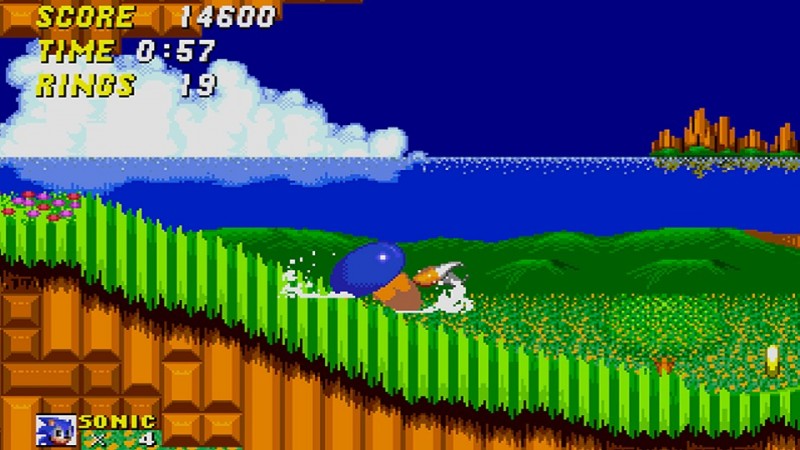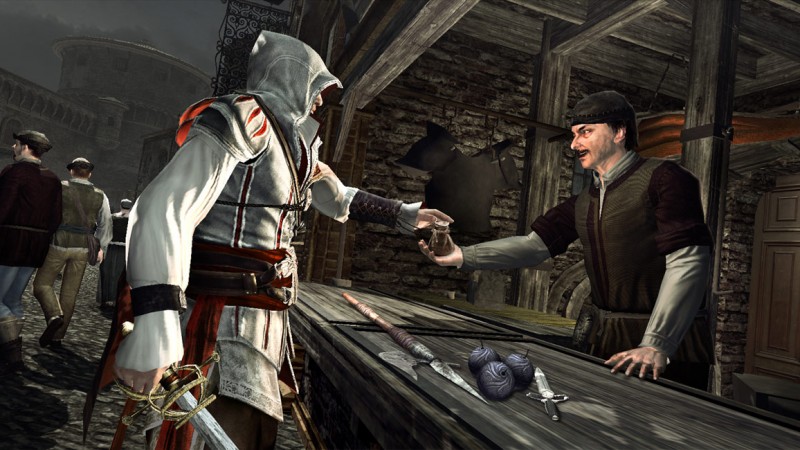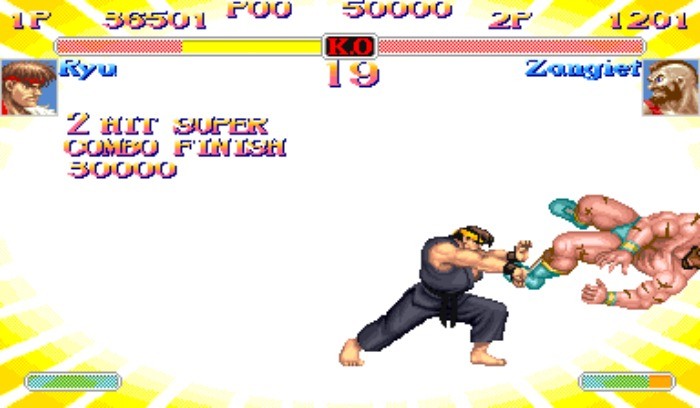10 Gameplay Mechanics That Completely Changed Our Favorite Series

As a game series ages, new ideas are introduced to keep the franchise fresh. Some concepts flop or are forgotten while others flourish. A select few even manage to redefine the way players engage with that series. Here’s a list of mechanics that accomplished the latter for their respective properties.

Spin Dash – Sonic the Hedgehog (Introduced in Sonic 2)
Anyone who’s ever booted up Sonic 1 after
playing the subsequent entries knows how jarring it is to revisit it because of
the absence of the spin dash. The maneuver became the most effective method of
instant propulsion, getting the blue blur up and around platforms quickly and
easily. Before that, Sonic had to build a running start that took seconds
(basically forever in this series) to get the lead out. Spinning is also handy
as a semi-invincible form of travel, efficiently taking out enemies that lie in Sonic's path. As far as we’re concerned, Sonic wasn’t truly about speed until he
started revving up the spin dash.

Tranquilizer Gun – Metal Gear (Introduced in Metal Gear Solid 2: Sons of Liberty)
Metal Gear emphasizes silent, clean infiltrations,
so this useful weapon quickly became a godsend upon its introduction. Instead
of having to always carefully circumvent enemies, players can fulfill their
trigger-happy tendencies and just shoot them down without making a racket or
feeling like a murderer. The Tranquilizer Gun is a prime case of having your
cake and eating it too, and may as well be grafted to Snake’s palm as it’s
remained one of the few must-have items in the series.

Economy – Assassin’s Creed (Introduced
in Assassin’s Creed II)
One of Assassin’s Creed II’s most engrossing
aspects was, surprisingly, building up Ezio’s Monteriggioni
Villa. Since then, every Assassin’s Creed has included a form of economy, from
purchasing property to sending recruits to fulfill contracts in other lands.
The prospect of earning extra dough to unlock and upgrade additional
headquarters greatly incentivizes side-activities. I remember going out of my
way to earn enough dough to buy every piece of artwork and weaponry to display
in my Assassin pad. Best of all, owned establishments generate perpetual
income, creating a strong hook to amass more property and, in turn, money.

Super Combo – Street Fighter (Introduced in Super Street Fighter II Turbo)
One of the most dramatic additions to Street
Fighter II during its long phase of updated installments was these special
attacks. Filling a meter while fighting allowed world warriors to unleash a
devastating super attack, giving them a strategic ace-in-the-hole to work
towards instead of just hitting each other until someone lost. The Super Combo
is irreplaceably woven into fabric of Street Fighter, appearing in every major
entry since. The concept has also taken various forms in other fighting games,
like Mortal Kombat’s X-Ray attacks.

Sliding/Charge Attack – Mega Man (Introduced in Mega Man 3 & 4, respectively)
It would take three games before the Blue Bomber
gained two of his most invaluable maneuvers. Sliding bestowed players with a
needed form of evasion in a game known for lobbing tons of projectiles at
players. It also facilitated more creative level design, such as narrow
passages accessible only by sliding. Mega Man’s Charge Shot provided a
powerful, built-in weapon capable of annihilating foes quicker. In Robot Master
battles, the Charge Shot’s powerful wallop makes it an effective backup option
when you’ve exhausted the chosen special weapon’s ammo.
For more game changing mechanics, head to page two.

Swimming – Grand Theft Auto (Introduced in San Andreas)
Rockstar’s sandbox epic grants unparalleled
player freedom, but water was more or less off limits until San Andreas gave
players their swimming lessons. Removing water’s touch of death expanded
exploration options – a watercraft became less of a death trap and more of a
viable form of transportation. Swimming also proved to be a solid escape tactic
from pursuing law enforcement, as they still haven’t quite adapted to water to
the degree the player has.

Grapple Attack – Devil May Cry (Introduced in Devil May Cry 4)
Devil May Cry has always been about keeping
complicated combo strings intact for as long as possible. However, nailing a
powerful strike often knocked demons out of player’s grasp, killing any
momentum. Nero’s demonic arm, Devil Bringer, in Devil May Cry 4 largely eradicated that
nuisance, allowing players to keep foes within arms reach at all times (and
vice versa). Grabbing foes also added another stylish layer of fun, like
slaughtering enemies in mid air, then effortlessly yanking another from the
ground to join the beatdown. The idea worked so well that Ninja Theory carried
the concept over into the DMC reboot where it proved just as invaluable.

Role-Playing Elements – Castlevania (Introduced in Symphony of the Night)
Instead of just one idea, Castlevania’s PlayStation
debut introduced several additions derived from a single genre: role-playing
games. Alucard wasn’t a static character like in previous games. He could be
leveled up, outfitted with different stat-changing equipment, and wield a
multitude of items with various effects. The experiment was a tremendous
success, and virtually every game in the series since has been designed around
Symphony’s blueprint.

Gravity Gun – Half-Life (Introduced in Half-Life 2)
The crowbar is considered Gordon Freeman’s
signature weapon, but the Gravity Gun is what defines the experience of
Half-Life 2 and its accompanying episodes. This versatile weapon is able to
lift and move objects, used to solve the game’s environmental puzzles,
and it doubles as an effective offensive weapon with its ability to
hurl objects. So much of Half-Life 2’s level design was centered around the
Gravity Gun, and it was so well-received that in Half-Life 2: Episode One, it
replaced the crowbar as Gordon’s initial weapon. If Half-Life 3 ever becomes a
thing, there’s no way the Gravity Gun won’t make an appearance.

Active Time Battles – Final Fantasy (Introduced in Final Fantasy IV)
Traditional turn-based combat was the norm until
Final Fantasy IV introduced the Active Time Battle system that would dominate
the franchise for years to come. Instead of sides just taking equal turns,
every action was tied to a meter that expended with each use and regularly
refilled at varying speeds. This added a fun element of timing to battle, as
well as a fresh irregularity to turn-taking as participants weren’t guaranteed
an equal amount of actions. Despite the radical changes Final Fantasy’s battle
system has undergone over the years, the ATB system has been an underlying
element in all of them and remains one of the series gameplay calling cards.

Get the Game Informer Print Edition!
Explore your favorite games in premium print format, delivered to your door.
- 10 issues per year
- Only $4.80 per issue
- Full digital magazine archive access
- Since 1991









